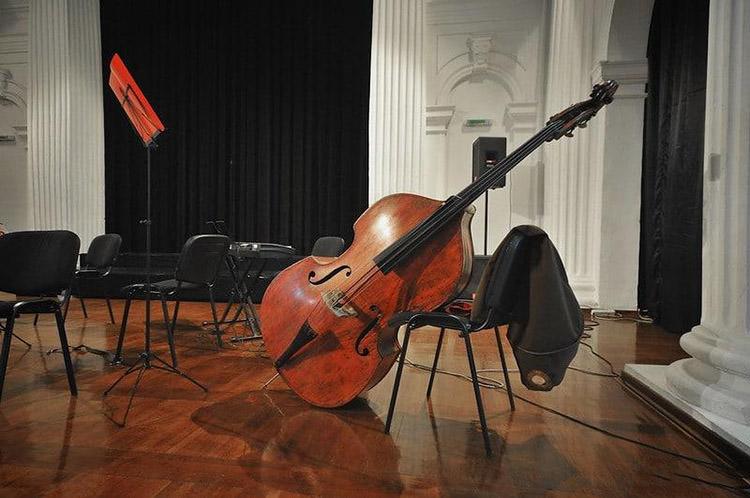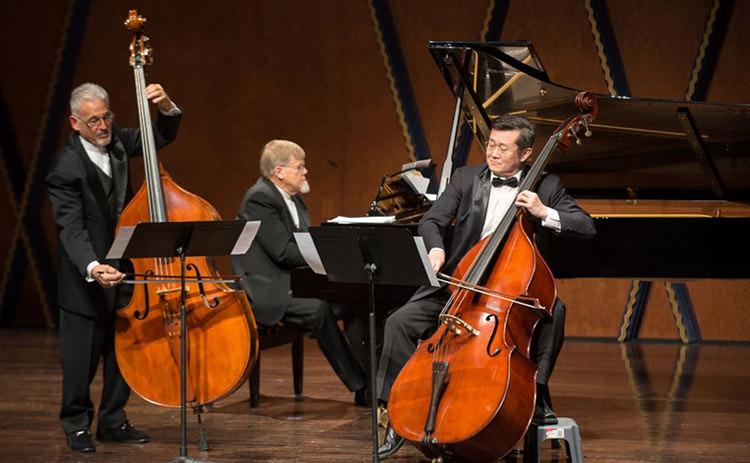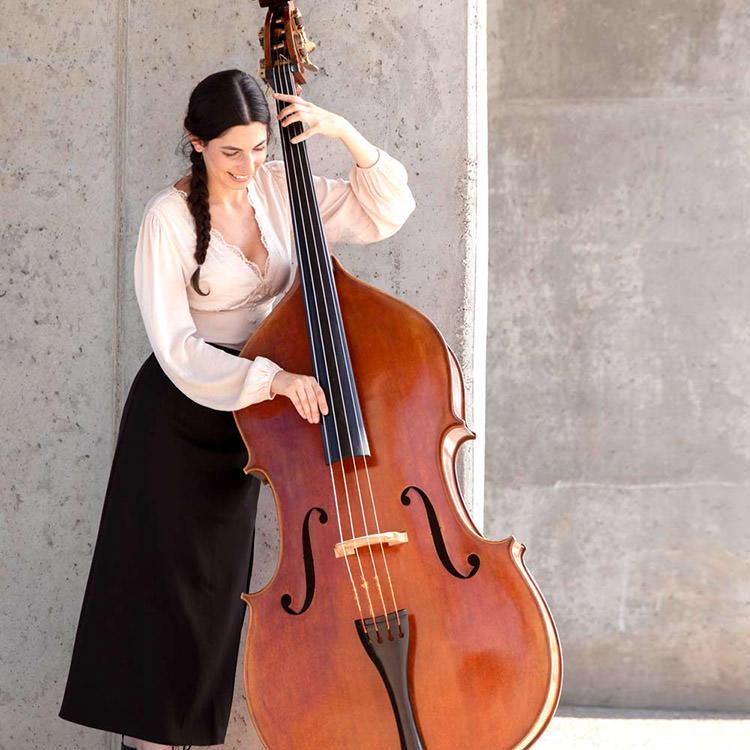A basic guide to the Double Bass
The double bass is definitely one of the most instantly recognizable elements of any orchestra ensemble. It is often featured in classical music arrangements, but can also be found in jazz bands, and other more modern musical gatherings. As such, the double bass is a deeply versatile instrument that can be used to lend depth to any and every musical piece.
In this comprehensive guide, we delve deeper into the world of the lowest pitched stringed instrument known to man.
First of all, what is the double bass?

Also known as the contrabass, or the bull fiddle, the double bass is a member of the string family of instruments, alongside the violin, cello, and viola. It’s believed that traditional double bass instruments, back when they were first invented in the 15th century, only had three (or sometimes, five) strings, rather than four. As part of the string section of an orchestral arrangement, the double bass typically serves to add a deep, warm underlayer to the composition.
Although it’s traditionally been a support instrument, and not a lead, the double bass’s forcefulness and importance shouldn’t be overlooked. Quite the contrary, in fact, as in more recent years, the double bass has been taking on an increasingly lead, solo role in more modern arrangements.
Like the bass guitar or the cello, the double bass typically has four thick strings, which are either pinched, or played with a bow (for wildly different sounds).
Fun fact: the double bass is the only stringed instrument to be tuned in fourths, and not in fifths. From the bottom up, the strings of a double bass are usually tuned to E, A, D and G.
The double bass stands at a whopping six feet (approx. 180 cm), and is, in structure, very similar to other bowed string instruments, like the violin. Made from several pieces of wood, the double bass sports a curved bridge to support the heavy strings, as well as the signature f-holes.
Why do they call it a “double bass”?

Why not a regular bass? Actually, the name accurately describes the function of the instrument. As the lowest pitched instrument in the ensemble, the double bass effectively doubles the range of the cello, which is next up the ladder of low-pitch instruments.
Depending on context, the double bass can also be referred to as “standing bass”, to differentiate it from the bass guitar. In jazz or bluegrass settings, the instrument is also referred to as “bass fiddle”, “bull fiddle”, or even “bass violin”.
How does the double bass work?
This magnificent instrument (which, in spite of its immense stature, can be custom-made to fit shorter musicians) is powered by its internal soundpost. This delicate piece, traditionally made from seasoned spruce, works by transmitting the vibrations at the top of the bass, all the way down to where the bass body is at its widest.
This serves to create that resounding, guttural sound that we’ve come to associate with the instrument itself. Thanks to its wonderful versatility, the double bass can be used in any genre of music, from classical orchestra, to rock n roll. Despite its heaviness (or perhaps because of it), it has the unique ability to create deeply soothing music.
How do you play the double bass?

Naturally, because of its notable size, one common way to play the double bass is standing up, though this can become tiresome, during longer pieces, or concerts. Alternatively, one can play the double bass sitting on a high stool, and leaning the instrument against their body. When playing sitting, the double bass is turned slightly inward, while the musician leans forward slightly, for better access to the strings.
Typically, the double bass can be played using a French or a German bow. Although similar, the French bow is typically handled from an overhand position (meaning the player holds their hand at a higher level, sloping the bow towards the strings. On the other hand (pun intended!), when using the German bow, the musician will typically grasp the bow as if shaking hands.
Of course, like many other stringed instruments, the double bass can also be played by freehand plucking, while also resorting to additional techniques, like a left-hand vibrato, to add body to the bass’s naturally warm sound.
Depending on the technique chosen, the double bass can range from a relaxing music sound, all the way to a nigh-transcendent, more forceful meditation music.
What’s the difference between the cello and the double bass?

One common misconception about the music world is that the cello and the double bass are, in truth, one and the same instrument. When we get right down to it, that’s quite far from the truth. While the two instruments are, indeed, cousin instruments, and quite similar, there are a few notable differences that set the cello and the double bass apart.
One of the more obvious differences to the naked eye will be the build of the instrument. When in doubt what instrument you’re listening to, check the shoulders. The double bass typically has sloped shoulders, as opposed to the cello’s rounded ones, as they offer better access to the strings for the player.
Another visual distinction between the two instruments is in the size itself. While both the cello and the double bass are massive instruments, the cello is a good foot shorter than the double bass. So whereas the double bass is about the height of an average male, the cello would make for a somewhat short individual.
Based on these differences, it might sound easy to tell the two instruments apart, but this confusion isn’t so widespread without reason. In fact, the two instruments seem to be built identically, with four strings, a curved bridge to support the strings, two f-holes, a tailpiece, an ebony fingerboard, and so on.
However, when in doubt, you can also look at the player to tell the cello and the double bass apart. As we’ve seen, the double bass is typically played either from a standing up position, or with the player sitting on a high stool. The cello, however, is too small to be played standing, mostly, and is instead played with the musician sitting on a normal chair, instead (thanks to its smaller size).
Last but not least, if you are more musically inclined, you can also tell the cello and the double bass apart by the sound. While the bass is tuned in fourths, the cello is more traditionally in fifths, and as the lowest-pitched instrument in the string family, the double bass is an octave lower than the cello, which means it emits a deeper sound.
Ready to give it a whirl?

Now that you’ve learned just what makes up the complex, versatile instrument that is the double bass, how it works, and why it’s different from the cello, it’s time to do some listening. Through Radio Art’s range of different radio channels, you can explore the important role the bull fiddle plays in jazz ensembles, but also discover the increasingly more substantial part it’s playing in classical music orchestras. Head on over to our 24 jazz channels, or our dedicated 34 classic music channels, for a full double bass audition today!
Our website respects the intellectual property rights of creators, as well as the music rights of authors and composers.
The musical works are provided solely for the private use of each visitor/user
and any further exploitation of them in any way is prohibited without prior permission from AUTODIA and EDEM Rights.
Radio Art is fully approved by the Greek Collective Rights Organizations | AUTODIA | EDEM Rights
Copyright © RABS - Radio Art Broadcasting services Ltd. All rights reserved.
The Art of Relaxing & Meditation Music
Privacy Policy & TOS








